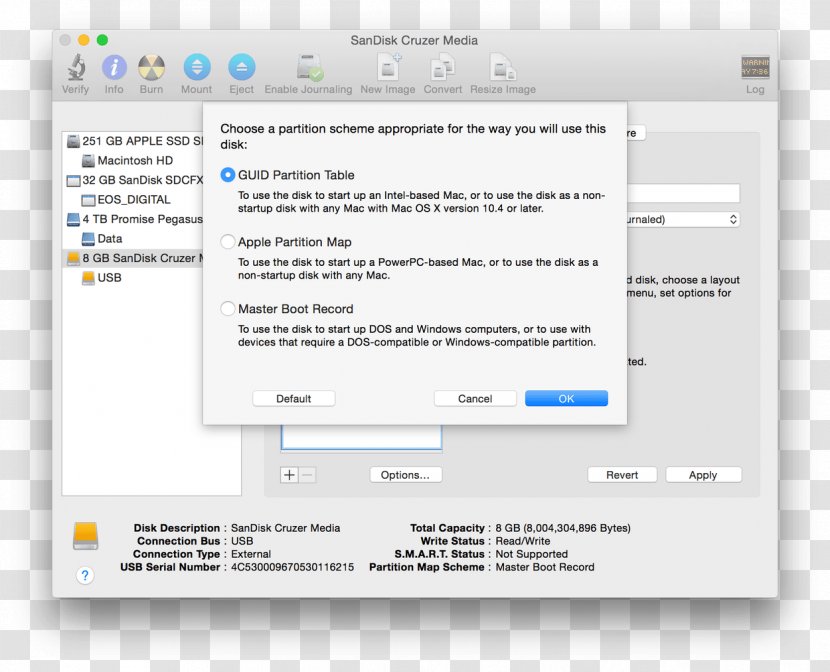- Yevgen is using the UTM app to run virtual machines on iOS devices, then has employed a process to create a virtual Hackintosh with a method shared on GitHub called OSX-KVM. KVM is an open source.
- A Hackintosh (a portmanteau of 'Hack' and 'Macintosh') is a computer that runs Apple's Macintosh operating system macOS (formerly named 'Mac OS X' or 'OS X') on computer hardware not authorized for the purpose by Apple. 'Hackintoshing' began as a result of Apple's 2005 transition to Intel processors, away from PowerPC.
Hackintosher
Administrator
Hackintosh.com links to everything you need to build a Hackintosh and get macOS Big Sur (macOS 11) as well as many earlier versions of Mac OS X running on an unsupported computer - instructions, step-by-step 'how to' guides, and tutorials - in addition to installation videos, lists of compatible computers and parts, and communities for support.

- Joined
- Jan 21, 2018
- macOS
- 10.15.0
- Mobo
- Gigabyte Z370N WIFI
- CPU
- i3-8100
- GPU
- UHD 630 Graphics
For all these steps you will need to edit your config.plist. When messing around with the SBMIOS settings it's recommended create a backup first before proceeding:
- Mount your EFI partition with Clover Configurator
- Navigate to /Volumes/EFI/EFI/Clover/kexts/Other
- Backup your config.plist by making a duplicate copy of it and renaming the backup something else i.e. config-smbios-backup.plist
- Right-click config.plist and open with Clover Configurator
- Click SMBIOS on left side
- Copy the Serial Number
- Go to checkcoverage.apple.com
- Paste Serial Number and click Continue
- If it comes back as valid you will need to generate a new serial number until you get a error or invalid serial number
- Go back to Clover Configurator SMBIOS section
- Repeat Generate New and paste to checkcoverage.apple.com until you get an Invalid Serial Number
Now that you have your own invalid serial number you need to replace the Board Serial Number with one containing your Invalid Serial Number along with 5 random digits. Since they can be any digits I keep the last five digits of the Board Serial Number and replace the first 12 with the Serial Number
- Copy Serial Number
- Replace the first 12 digits of Board Serial Number with the copied Serial Number
- Open Terminal
- Generate a unique string by entering uuidgen into Terminal
- Copy & Paste the generated UUID value from Terminal into SmUUID in Clover Configurator -> SMBIOS
- Save config.plist
- Restart Hackintosh
- Select RTVariables in Clover Configurator
- Set ROM value to UseMacAddr0
RTVaraibles -> MLB can be left blank once the steps are followed. You can also use one off a valid Mac that you own if you wish, but it is not required or experiment with an MLB generator if you wish, but again following the steps above you shouldn't have any issues with simply leaving MLB blank.
BooterConfig
- Set RTVariables -> BooterConfig to 0x28 for Intel for a AMD/Ryzen machine leave it at the value it's already set at.
- CsrActiveConfig or SIP should be left in the disabled state i.e. 0x67 for more information see: Enable & Disable System Integrity Protection (SIP) on a Hackintosh
 Requirements
RequirementsHackintoshes generally use Chameleon or Chimera bootloader (they're really the same thing) to boot Mac OS X. If you own a real Mac, you can just download the PKG installer for Chameleon bootloader and install it onto a USB drive in a single click. However, on Windows, the process is more complicated. In this guide, we will be manually writing the necessarily bootloader files from Chameleon onto a USB drive through a series of command-line tools in Windows. Here's what you'll need:
- An empty USB drive - This USB drive can be any size; it doesn't really matter, since the Hackintosh bootloader will only take up a few megabytes. We'll be erasing this drive, so make sure you back up any files that you have on it.
- Chameleon boot sector files - A collection of command-line tools that you'll need to create a boot USB drive in Windows.
- 'boot' file - The main boot file that Chameleon bootloader will need to start Mac OS X. This file was extracted from the newest version of Chameleon bootloader (as of July 1st, 2013), and can boot any version of Mac OS X, including OS X 10.9 Mavericks.
- 'Extra' folder - A collection of additional kexts and configuration files necessary to get Chameleon bootloader working properly with Mac OS X. This folder should allow most standard Hackintosh setups to boot properly, though you can add your own specific kext files if you wish.
This step is technically optional, but doing it reduces your chances of errors. Start Windows and plug your USB drive into your computer. Open Windows Explorer (a.k.a. 'My Computer'), and check the letter of your USB drive. Remember this for later-- in the screenshot below, my USB drive (named 'Whatever') has the letter 'O'.
Next, type 'partition' into the Start Menu. Click on the first result, which should open Window's built-in 'Disk Management' program. From here, find the letter of your USB drive, right-click on it, and click 'Format' to erase it.
Hackintosh Usb Not Working
When asked, format the USB drive with the 'FAT32' file system. This should only take a few seconds.
2. Run the command-line program
Now we're going to set up the boot USB drive from the Windows Command Prompt. For this, you'll need several 'boot-sector' files, downloadable below:
DOWNLOAD: Chameleon boot sector files
The Chameleon boot sector files will be stored inside a single ZIP file. Double-click on the ZIP file to open it. Click the 'Extract all files' button in Windows Explorer, extract all of the files onto the Windows desktop (or some other random place where you can find the files later). The files should be extracted in a folder called 'Chameleon_BS'.
Hackintosh Usb Torrent
Next, type 'Command Prompt' into the Start Menu. Right click on the first result, and click 'Run as administrator'-- doing this should open the Windows Command Prompt.
In the Command Prompt, enter the following command:
In the Command Prompt, enter the following command:
Replace 'Username' with your Windows username (include the quotation marks). In the screenshot below, I've replaced my Windows username with a blank line. This command changes the folder that the Command Prompt is working on (cd stands for 'change directory'). Now, everything you type into the Command Prompt will apply to the files in the Chameleon_BS folder. This assumes that you put the Chameleon_BS folder on the desktop-- if you put it somewhere else, you may edit the command appropriately. Next, enter the following command:
makeusb Letter:
Replace 'Letter' with the actual letter of your USB drive (don't include the quotation marks). In the screenshot below, the letter of my USB drive is 'O'. This command sets up the USB drive so that it'll be ready to boot Mac OS X.
Once the Command Prompt finishes working (it'll probably only take a few seconds), eject your USB drive from your computer. Then, plug the USB drive in again; this is necessary to get Windows to recognize your newly set-up USB drive properly.
3. Copy the boot files onto the USB drive
Finally, you'll need to copy several extra boot files onto the USB drive. Download the 'boot' file and 'Extra' folder; these are necessary files for the Mac OS X startup process.
DOWNLOAD: 'boot' file
DOWNLOAD: 'Extra' folder
The 'Extra' folder will be stored inside a ZIP file. Double-click on the ZIP file to open it. Copy the 'Extra' folder into your USB drive. Next, download and copy the 'boot' file onto your USB drive as well.
This completes the setup process. Now you should have a working Chameleon boot USB drive that can help start Mac OS X on most PCs. Congratulations!
NOTE: When attempting to boot Mac OS X with the help of a boot USB drive, make sure that USB drives are set to first priority in your computer's BIOS (Step 4 of our standard Mountain Lion installation guide).
SOURCE: [GUIDE]Creating a Chameleon Bootable USB from Windows
